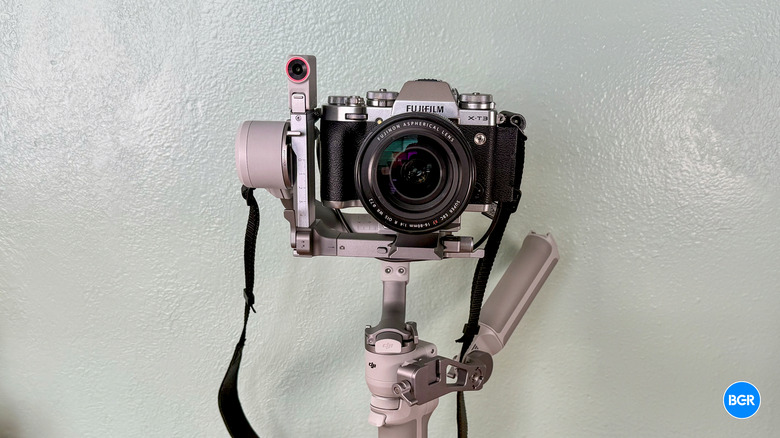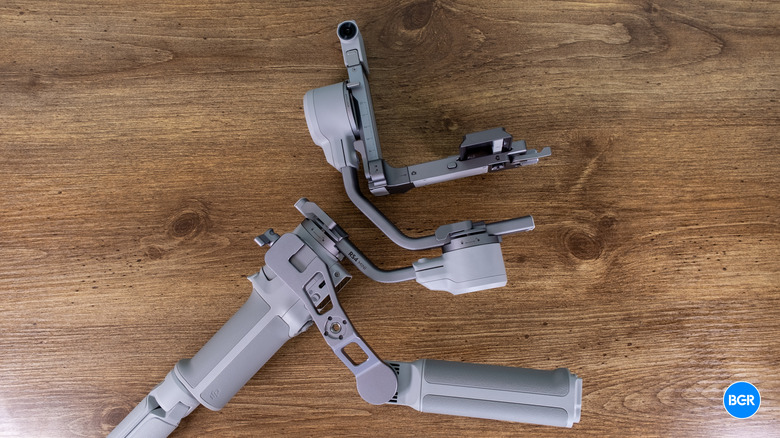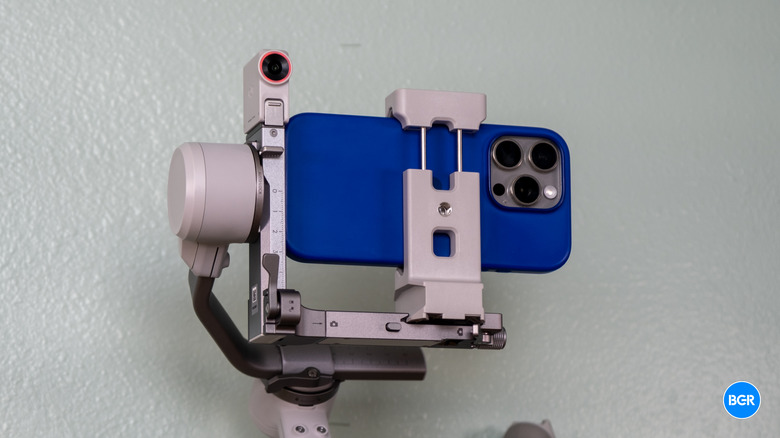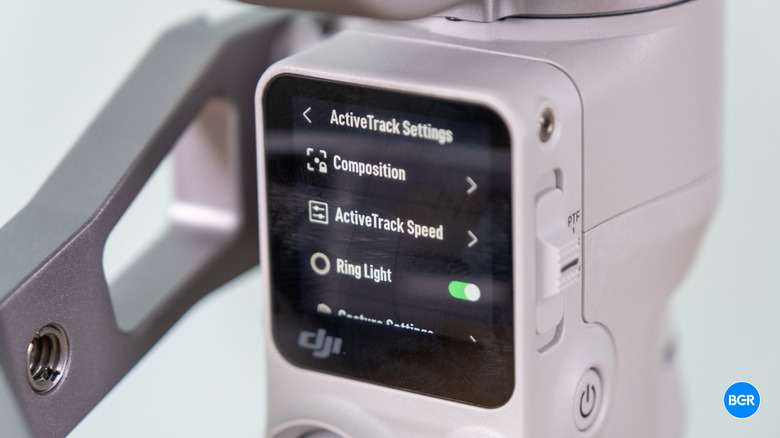DJI RS 4 Mini Review: Perfect Gimbal For Content Creators On The Go
- Smart tracking features
- Easy setup process
- Solid battery life
- New modes for content creators
- Intelligent Tracking Module costs more
| Buy From | List Price | Sale Price | |
|---|---|---|---|
| Amazon | $369 | Check Deals | See It |
| DJI | $369 | $369 | See It |
We may receive a commission on purchases made from links.
DJI has been building high-end gimbals for mobile and professional photographers for some time now. While the DJI Osmo series gets much of the attention, it's the Ronin series of stabilizers that can really add some versatility to your setup — and even prove useful for mobile users who simply want smoother footage. The DJI RS 4 Mini is the latest in the series, serving as a cheaper alternative to the RS 4 and RS 4 Pro while still retaining advanced features and even debuting some new ones.
But the DJI RS 4 Mini does still, in a way, go up against the likes of the also-new DJI Osmo Mobile 7 Pro, which is a lighter option built specifically for mobile users. And, that's not to mention the fact that it has to compete with the higher-end RS 4 models for professionals. So, what makes the DJI RS 4 Mini so special, and who exactly is it for?
DJI RS 4 Mini specs
| Weight | 2 lbs |
| Max payload | 4.4 lbs |
| Display | 1.4-inch color LCD |
| Battery | 13 hours |
| Ports | NATO, USB-C (charging) |
| Price | $369 (base), $459 (combo) |
DJI RS 4 Mini review: Design
The goal of the DJI RS 4 Mini is to provide professional stabilization in a package that's a little more budget-friendly and much lighter in weight. Indeed, the RS 4 Mini is pretty light compared to other professional-level gimbals. While professionals may want something more advanced, that doesn't mean that the RS 4 Mini doesn't have a place in a pro arsenal — though, to be fair, it's clear that the gimbal is targeted specifically at content creators who want a little more from their setup.
In terms of numbers, the gimbal comes in at around two pounds, which might seem like a lot, but it's actually quite a bit lighter than the other RS 4 models, like the RS 4 and RS 4 Pro.
Like with other professional gimbals, you'll have to get the settings of the gimbal dialed into your camera before you get started. The process of doing so is relatively simple, and the gimbal offers a series of both detailed and more major adjustments that can help you get things perfectly set. It also has a fine-tuning knob that will help you perfectly balance the alignment of the camera.
One notable addition to the RS4 Mini over previous DJI gimbals is improved gimbal stabilization that provides better support for creators who want to film vertically. The stabilization is DJI's 4th-generation stabilization tech, and it's built to balance the camera in both horizontal and vertical modes. In other words, whether you're filming for YouTube or TikTok, you should be set.
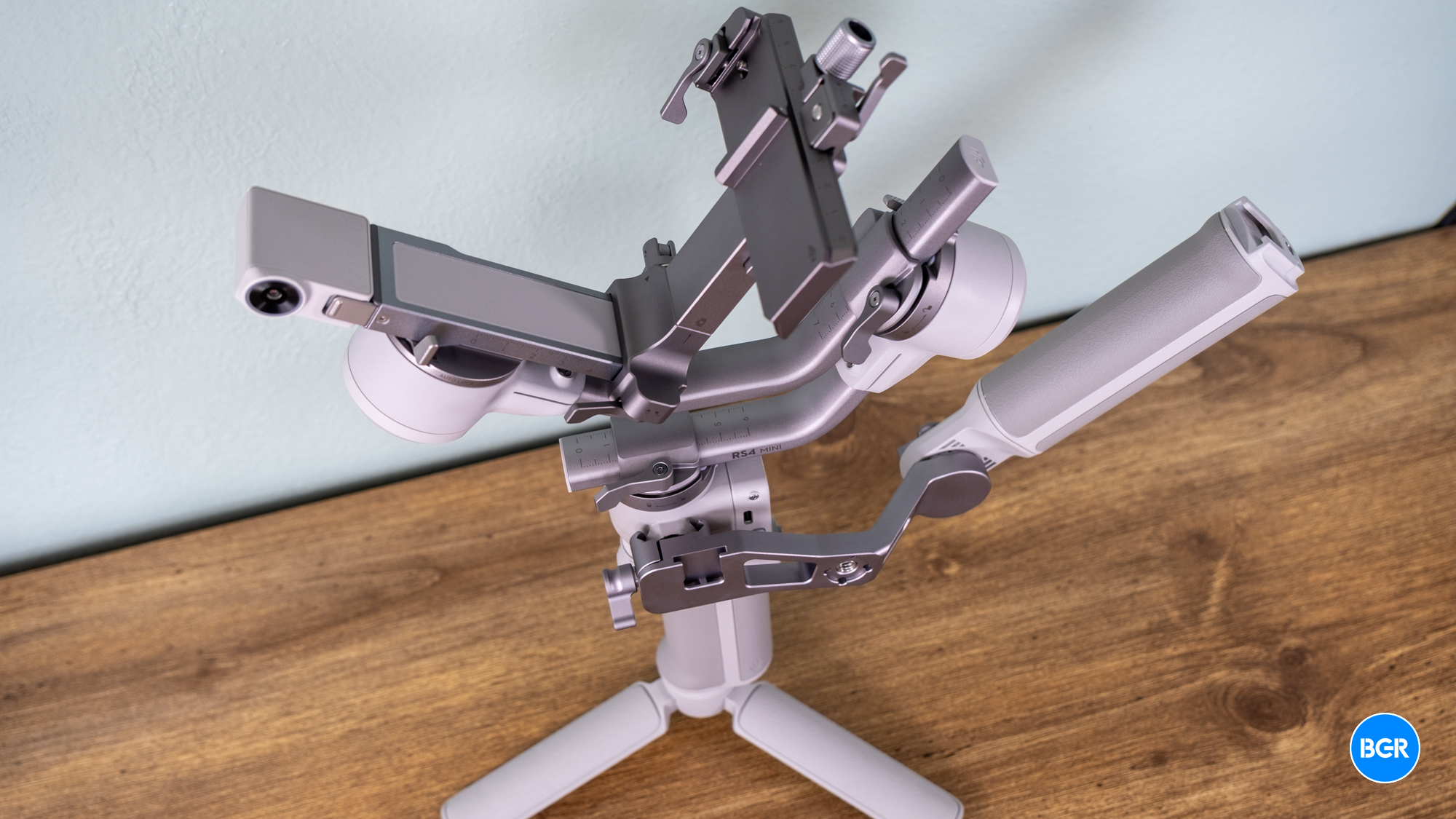
On the main handle of the gimbal can be found a 1.4-inch full-color display with a series of controls around it that allow you to control your shots. There's a joystick for both zoom and gimbal control, along with a trigger on the back and a scroll wheel that you can use with your pointer. All the controls are relatively simple to access, and the buttons and switches all feel tactile and sturdy. That's helpful for on-the-go control.
Towards the top of the gimbal is where you'll attach one of the best new features in the form of the Intelligent Tracking Module. It's a small camera that magnetically attaches to the gimbal and is used in conjunction with your camera and the built-in software to track objects for a more simplified filming process. We'll get into what it does a little later, but the module is relatively subtle, yet a hugely helpful feature for those who want a little more help in keeping their subjects in the shot.
Note, we're reviewing the DJI RS 4 Mini Creator Combo, which comes with the Intelligent Tracking Module and a briefcase handle, along with a phone mount for the gimbal. The RS 4 Combo includes everything except the phone holder, while the base package does away with the Intelligent Tracking Module and the briefcase handle. All packages come with a mini tripod, which is helpful.
DJI RS 4 Mini review: Features
There are plenty of similarities between the RS 4 Mini and the other RS 4 models, though. Notably, the gimbal still offers automated features that make it very easy to get up and running within a few seconds. The gimbal automatically folds up when powered off and unfolds when powered on. So while you'll need a few minutes to first set it up with your camera, once that's done, you can leave the settings more or less in place and get shooting relatively quickly. It's a neat feature, and while it might make you a little nervous if your camera happens to be attached, it worked safely while I was testing it.
There are some other handy modes and features too. There's a gimbal lock feature that keeps the camera in a set position no matter how you move the gimbal, and there are a series of gimbal modes to choose from.
The ActiveTrack feature can seriously come in handy too — though it's not without limitations. The feature is really set up to only track human subjects, which means that it's not as useful for someone like me, who mostly shoots products. That said, if you do want to shoot human subjects, for example while walking, it could help allow you to film better footage by taking some of the multitasking out of the equation.
There are also automatic gestures that you can to control tracking and shooting. For example, you can use gestures to adjust the composition of your shot and to start and stop tracking.
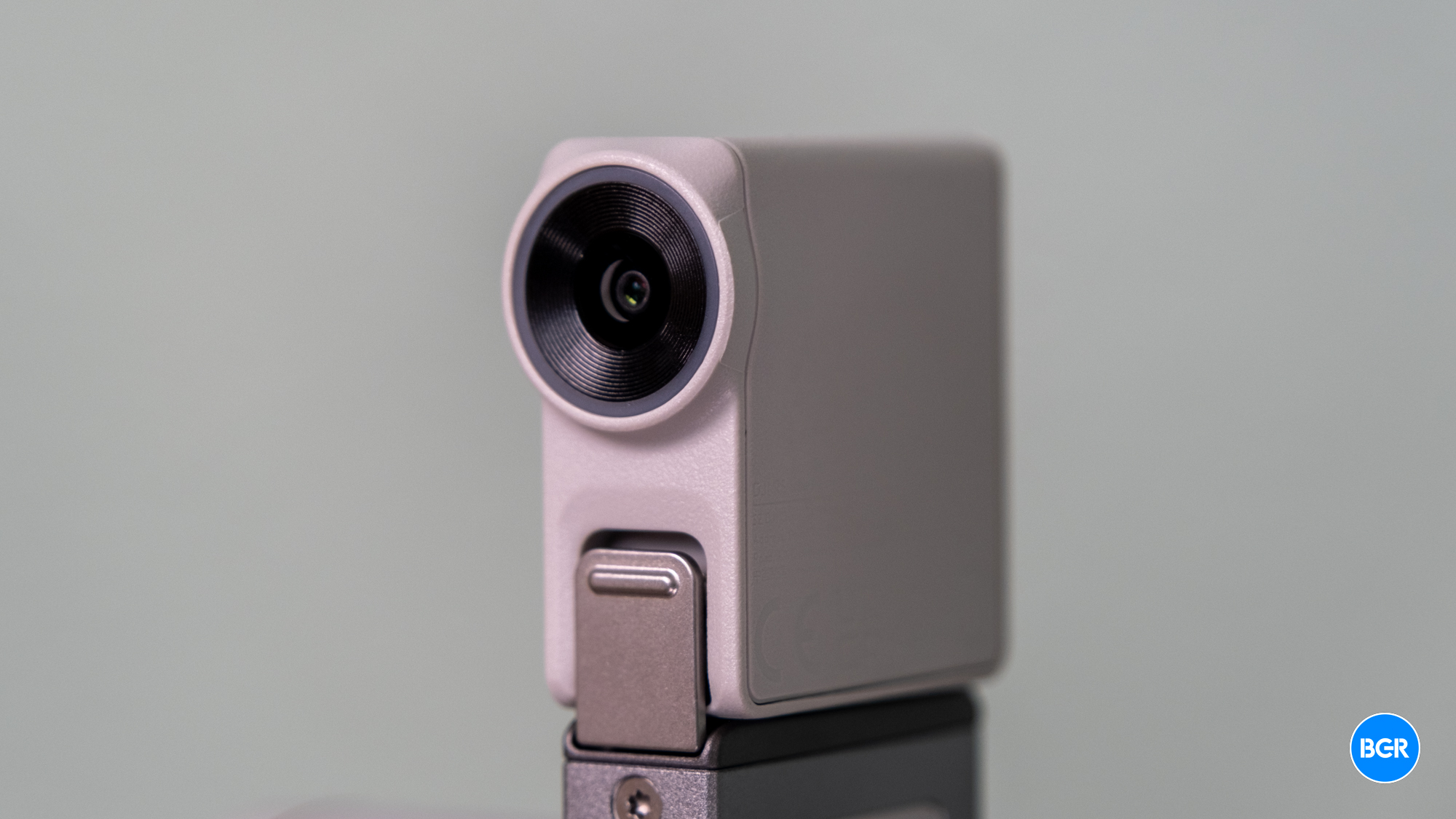
The gimbal has a 13-hour battery life, which is solid. The battery isn't removable, so if you're planning on a long shooting session, make sure you charge up before you start.
The gimbal is compatible with a huge range of different camera models, and I tested it with my Fujifilm X-T3. Unfortunately, the X-T3 doesn't allow for zoom control using the gimbal — however it does support things like zooming, pulling focus, auto focus, and more.
DJI RS 4 Mini review: App and software
The DJI RS4 Mini works with the DJI Ronin app, plus you'll interact with the software built into the gimbal. Frankly, you don't necessarily have to use the app all that much. It allows you to register your gimbal, and it offers access to some settings, but most of those settings can be accessed on the gimbal itself. The main thing that you can't do on the gimbal itself is update the firmware, so the app can still come in handy if you need to do so.
Perhaps more important is the software built into the gimbal, which is relatively simple to use. On the main interface, you can access balance settings and run a calibration for the gimbal. You can also tweak tracking speeds — between slow, medium, and fast — in either of use two modes: smooth and responsive. From that screen, swiping right will bring you to the ActiveTrack settings, while swiping up will give you joystick speed and smoothness settings. Swiping down will bring you to quick settings like Bluetooth, audio, and a button to dive into the full settings menu, which includes things like automatic locking, the ability to disable selfie mode, and more.
Again, the software is easy to use, and once you get set up with the settings you need, you likely won't need to interact with it all that much except to see the battery status, which is always on the screen.
Conclusions
The DJI RS 4 Mini bridges the gap between professional gimbals and those created for content creators. Content creators looking for a smoother shooting experience with some automatic features will love things like ActiveTrack and the Intelligent Tracking Module. While it's probably overkill for creators who exclusively use their phones, those who want smoother footage from their mirrorless cameras can't do much better than the DJI RS 4 Mini without upgrading to a more expensive DJI Ronin model. And, even professionals who want something lightweight will love what's on offer here.
The competition
The biggest competition for the RS 4 Mini comes from the other models in the RS 4 lineup. The RS 4 Mini may be the cheapest in the series, but it isn't necessarily the worst. It's built to be lightweight, and it supports a lower payload, but if you don't need it for things like full-size cinema cameras, that shouldn't matter. If you're buying a gimbal for a mirrorless camera, for example, the DJI RS 4 Mini should be more than enough gimbal for your needs.
Should I buy the DJI RS 4 Mini?
Yes. It's an excellent lightweight gimbal for content creators.
